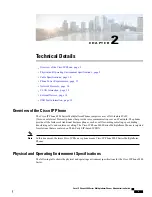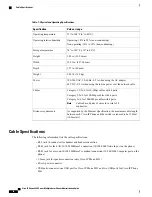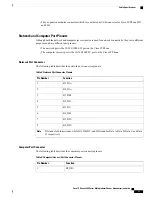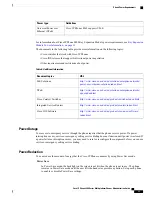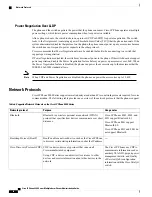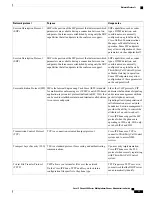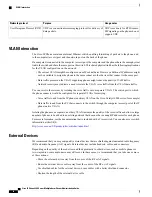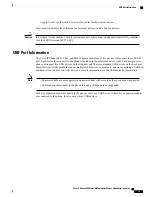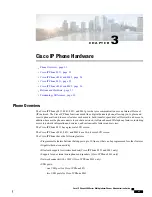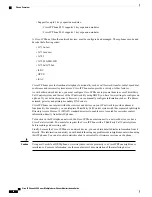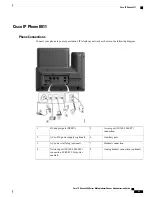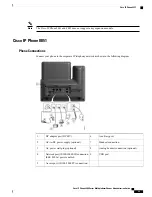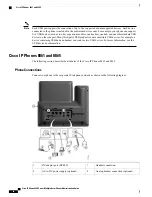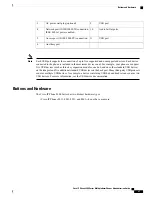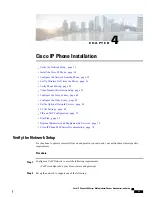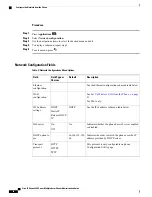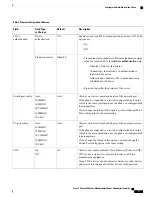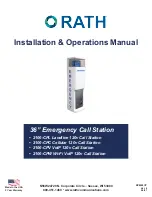
•
Support for up to 3 key expansion modules:
◦
Cisco IP Phone 8851 supports 2 key expansion modules
◦
Cisco IP Phone 8861 supports 3 key expansion modules
A Cisco IP Phone, like other network devices, must be configured and managed. These phones encode and
decode the following codes:
•
G.711 a-law
•
G.711 mu-law
•
G.722
•
G.722.2/AMR-WB
•
G.729a/G.729ab
•
iLBC
•
OPUS
•
iSAC
Cisco IP Phones provide traditional telephony functionality, such as call forward, transfer, redial, speed dial,
conference and voicemail system access. Cisco IP Phones also provide a variety of other features.
As with other network devices, you must configure Cisco IP Phones to prepare them to access Third-Party
Call Control system and the rest of the IP network. By using DHCP, you have fewer settings to configure on
a phone. If your network requires it, however, you can manually configure information such as: IP address,
netmask, gateway and primary/secondary DNS servers.
Cisco IP Phones can interact with other services and devices on your IP network to provide enhanced
functionality. For example, you can integrate Third-Party Call Control system with the corporate Lightweight
Directory Access Protocol 3 (LDAP3) standard directory to enable users to search for coworker contact
information directly from their IP phones.
To function in the IP telephony network, the Cisco IP Phone must connect to a network device, such as a
Cisco Catalyst switch. You must also register the Cisco IP Phone with a Third-Party Call Control system
before sending and receiving calls.
Finally, because the Cisco IP Phone is a network device, you can obtain detailed status information from it
directly. This information can assist you with troubleshooting any problems users might encounter when using
their IP phones. You can also obtain statistics about a current call or firmware versions on the phone.
Using a cell, mobile, or GSM phone, or two-way radio in close proximity to a Cisco IP Phone might cause
interference. For more information, see the manufacturer
’
s documentation of the interfering device.
Caution
Cisco IP Phone 8800 Series Multiplatform Phones Administration Guide
22
Phone Overview
Summary of Contents for 8851
Page 23: ...P A R T I About the Cisco IP Phone Technical Details page 9 Cisco IP Phone Hardware page 21 ...
Page 24: ......
Page 36: ...Cisco IP Phone 8800 Series Multiplatform Phones Administration Guide 20 USB Port Information ...
Page 48: ......
Page 98: ......
Page 136: ......
Page 168: ...Cisco IP Phone 8800 Series Multiplatform Phones Administration Guide 152 XML Services ...
Page 204: ...Cisco IP Phone 8800 Series Multiplatform Phones Administration Guide 188 Capture Packets ...
Page 210: ......


